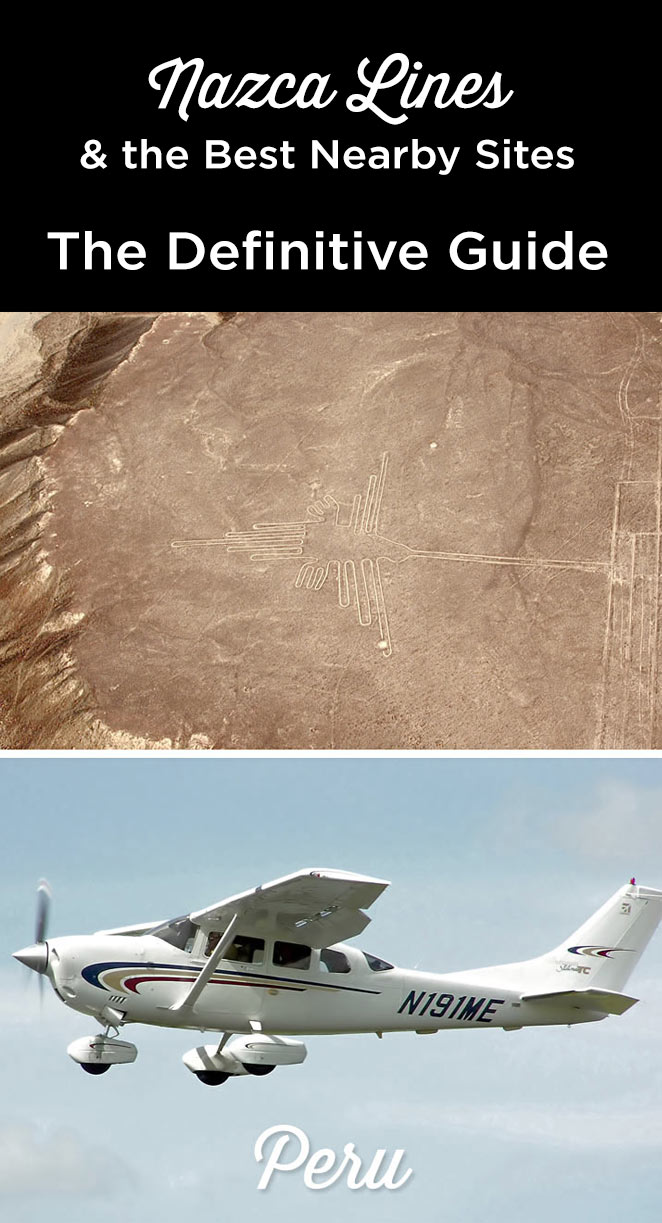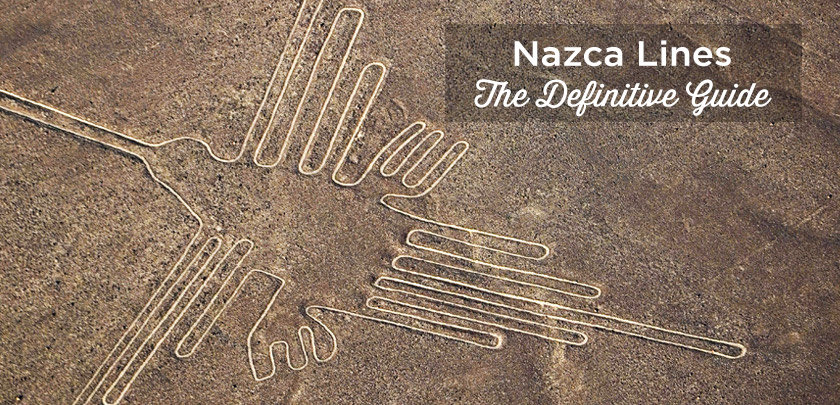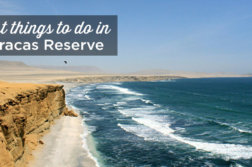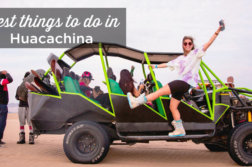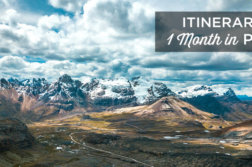Nazca Travel Guide: Nazca Lines, Desert Tours & Hidden Gems
The city of Nazca takes its name from the ancient Nazca culture, which flourished in the region between 200 B.C. and 600 A.D.—long before the rise of the Inca Empire.
Today, Nazca is world-famous for its enigmatic Nazca Lines—huge geoglyphs etched into the desert floor, astonishingly well preserved by the region’s dry climate and windless conditions.
To help you prepare your trip, I’ve put together a complete guide to Nazca, with everything you need to know about flying over the Nazca Lines and discovering the area’s many other archaeological and natural wonders.
You’ll also find my hotel recommendations for every budget, plus sample 1- and 2-day itineraries to help you plan your stay.
So—what is there to see in Nazca, and what’s it really like to fly over the famous geoglyphs?
Sommaire
- Nazca Travel Guide: Nazca Lines, Desert Tours & Hidden Gems
- 1. Flying over the Nazca Lines
- 2. Observe the lines from the lookout point
- 3. Chauchilla Cemetery
- 4. Antonini didactic museum
- 5. Cahuachi
- 6. Cantalloc Aqueducts
- 7. Los Paredones
- 8. Maria Reiche Museum
- 9. The Palpa Lines
- 10. Telar de Buena Fe
- 11. Maria Reiche Planetarium
- 12. Dune buggy ride and sandboarding in the Nazca desert
- 13. Sandboarding at Cerro Blanco
- Where to sleep in Nazca?
- How long to visit Nazca?
- What to take to Nazca?
- Where to eat in Nazca?
- How to get to Nazca?
- Book Your Flight at the Best Price
- Rent a Car in Peru
- Traveling to Peru? These articles will help you!
1. Flying over the Nazca Lines
The Nazca Lines are not only one of Peru’s most iconic attractions, but also one of its greatest unsolved mysteries.
These massive geoglyphs—composed of intricate drawings and geometric patterns—were etched into the desert floor by the Nazca culture between 500 BC and 500 AD, spanning an area of over 290 square miles.
Among the most famous figures are a giant bird stretching over 1,150 feet, a monkey, a hummingbird, a condor, a lizard, and even a curious humanoid shape often called “the astronaut.”
But that’s not all—you’ll also find lesser-known figures like whales, llamas, a dog, a small bird, a tree, a star, and many others. New shapes are still being discovered today!
1.1 How to fly over the Nazca Lines
The best—and only—way to truly appreciate the scale and artistry of the lines is by taking a scenic flight over Nazca.
These flights typically last 30–40 minutes and take place in a small Cessna aircraft, giving you the chance to see up to 12 figures from above.
Be aware that weather conditions, especially wind, can affect flight schedules. That’s why it’s wise to book a morning departure—in case of delays, you’ll still have time during the day to reschedule.
- Flights operate daily between 7:00 am and 4:30 pm.
- The airport is easily accessible—expect to pay around 4 soles for a taxi from central Nazca.
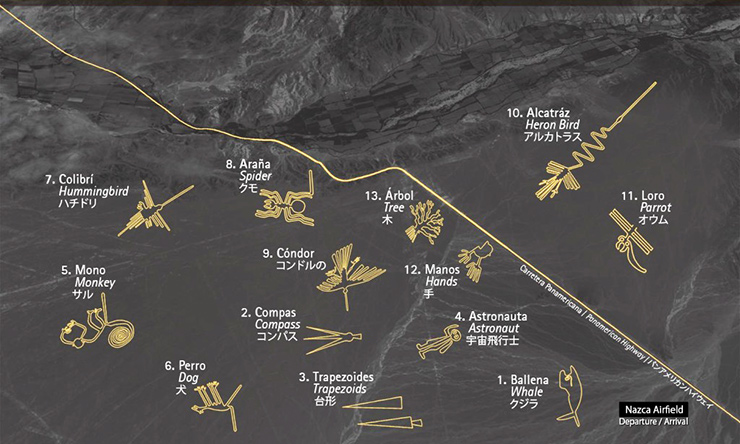
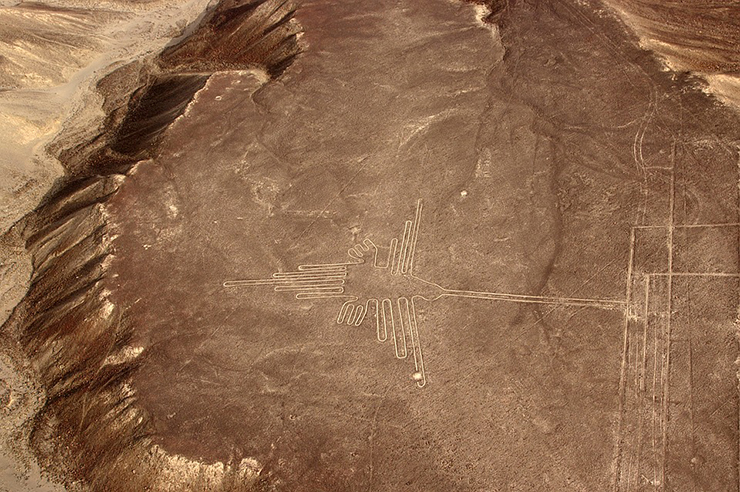
1.2 How much does a flight over the Nazca lines cost?
Several companies fly over the lines, such as Aerodiana, Aeronasca, MovilAir, AeroParacas, Alas Peruanas.
The price of the flights (80-120$ per person) varies according to the company and the type of service offered.
There are also other companies that depart from Pisco and Ica, there the prices can go up to 240-290$USD per person.
1.3 Are the flights over Nazca safe?
Yes, the planes are safe, but since they are small, they are quite unstable and it is not uncommon for some passengers to get sick.
If you tend to get motion sickness, you are likely to feel nauseous when the plane tilts so that you can see the Nasca lines.
So it is best to skip breakfast (or eat a light breakfast) before boarding and take anti-nausea medication with you.
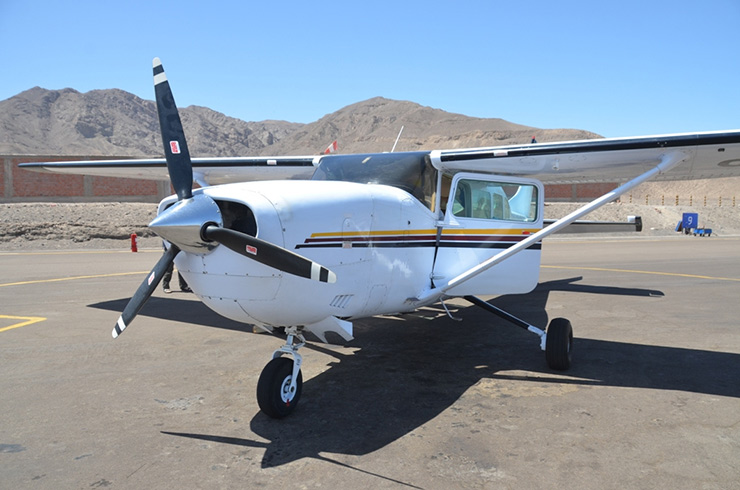
1.4 Where and how to book the flight over the Nazca lines?
I strongly recommend you to book your flight in advance, especially in high season!
Don’t forget to bring your passport and boarding pass for the flight.
Children up to 2 years of age will sit over their guardian, they do not count as a passenger.
You can book the flight over the Nazca Lines here:
It is also possible to book the day tour from Lima, which includes hotel pick up, overflight of the Nazca Lines (35-45 min), you will see the Ballestas Island and the Huacachina Oasis. All in one! Book here:
1.5 Where can I leave my luggage during the flight?
If you have booked a hotel in Nazca, they can keep your luggage without any problem.
If not, the airline you choose to have your flight with will store it at the airport.
1.6 What was the purpose of the Nazca Lines?
Their true meaning remains a subject of debate, fueling both scientific inquiry and imaginative speculation.
One theory proposes that the lines were meant to be seen from the sky—offerings to the gods above.
Renowned archaeologist Johan Reinhard suggested they were part of a ritual dedicated to a water deity, essential for survival in such a dry region. The lines, he argued, were sacred paths for invoking divine intervention.
Others believe the lines may have served as a prehistoric astronomical observatory, with several aligned to significant celestial events such as solstices.
Meanwhile, Maria Reiche, the German mathematician and archaeologist who devoted her life to studying the lines, theorized that the geoglyphs depicted constellations and celestial calendars.
Considering the advanced astronomical knowledge of pre-Columbian civilizations, these ideas are not far-fetched—though no single theory has yet been proven conclusively.
And of course, there’s the ever-popular theory involving extraterrestrials
2. Observe the lines from the lookout point
Not keen on flying over the Nazca Lines?
No problem—you can still catch a glimpse of these ancient geoglyphs from the ground! Head to the Maria Reiche Viewpoint, a modest but strategically placed tower that allows you to see three figures: the Tree, the Hands, and the Lizard.
The lookout is located about 12.5 miles north of Nazca, right along the Pan-American Highway.
- How to get there: Hop on a local northbound bus and let the driver know you’d like to get off at the mirador. The fare is around 2–3 soles. The tower is right next to the road, so it’s easy to spot.
- Entrance fee: 4 soles per person.
It’s a great budget-friendly alternative and a perfect choice if you’re short on time or prefer to keep your feet on the ground.
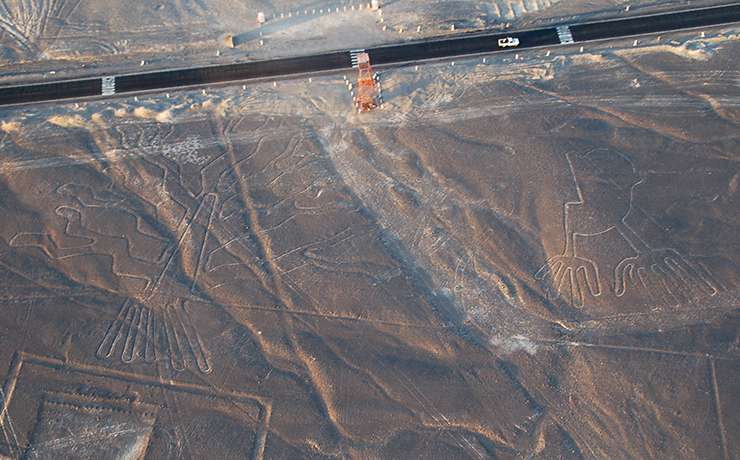
3. Chauchilla Cemetery
This great cemetery of the Inca culture-Chincha is one of the main attractions to visit in Nazca.
It dates back to the 10th century and has been used for 700 years!
It was looted by the huaqueros but the mummified bodies were very well preserved thanks to the desert climate and the efficiency of the mummification process: the body was wrapped in cotton, then covered with resin and kept in adobe tombs.
Incredible but true, a thousand years later, some bodies still have hair and remains of skin!
- Entrance fee: 8 soles; 8am-2am
- It is 19 miles from the city. It is best to go with a tour from Nazca (which usually includes Cantalloc) or by cab, but it is not always easy to find one.
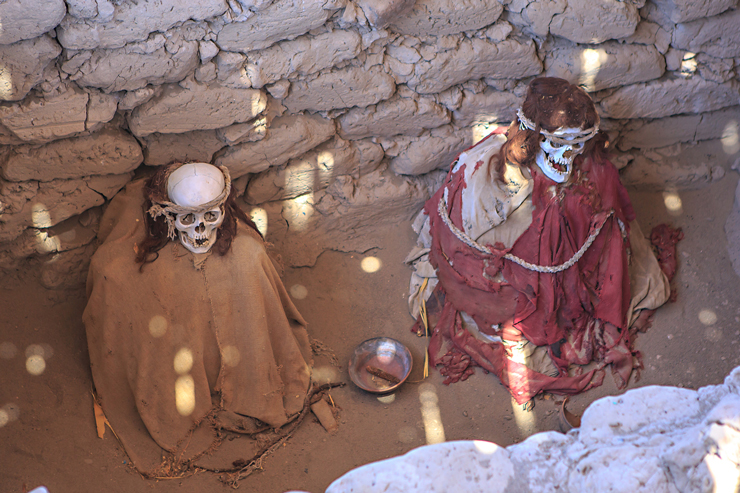
Fun fact: an important scene from Indiana Jones & The Kingdom of the Crystal Skull takes place in the Chauchilla cemetery.
They are looking for the head of Cristal in the tomb of Francisco de Orellana but they will have to face bloodthirsty guardians…
4. Antonini didactic museum
It is a very interesting archaeological museum that I recommend you to visit to learn about the Nazca culture.
It presents an important collection with textiles, musical instruments, ceramics and other artifacts found in Cahuachi, the largest ceremonial center of mud in the world.
There are also life-size reconstructions of tombs, reproductions of the Huayhua cave paintings and a model of the Nazca lines.
In the garden you can see part of the Bisambra aqueduct which is a testament to the Nazca’s talent for hydraulic engineering (you can imagine how good they had to be to be able to farm in the desert!).
- Address: Avenida de la cultura 600, Nazca; Admission: 20 soles, 9h-19h. Facebook page
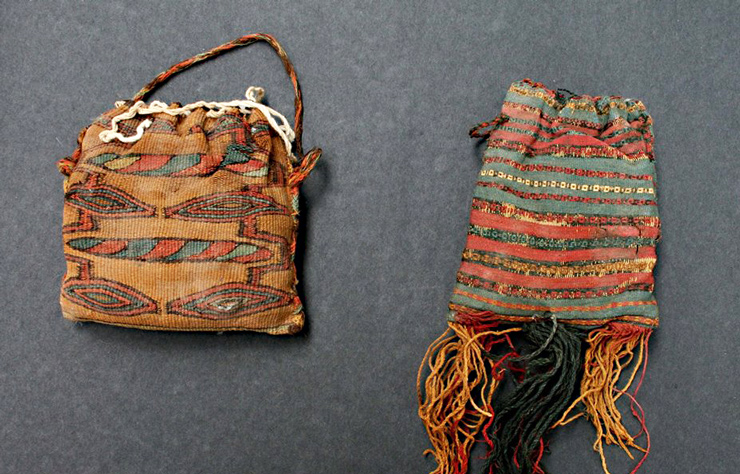
5. Cahuachi
Cahuachi is the most important ceremonial center of the Nazca culture discovered to date.
This vast site served as a sacred place of pilgrimage and was home to the elite and priestly class. Numerous religious rituals and sacrificial ceremonies were performed here to seek the protection of the gods.
Visitors can see the main pyramid, two secondary pyramids, and a series of structures—more than 30 others are still buried and yet to be excavated. The site also includes a cemetery and an enigmatic area known as Estaquería, whose exact purpose remains unknown.
One of its most curious features is a floor lined with 240 huarango trunks (Neltuma pallida)—perhaps the remains of a massive tent used to shelter pilgrims, an astronomical observatory, or even a ritual mummification site. The mystery adds to Cahuachi’s unique atmosphere and archaeological importance.
- Open from 9 am to 4 pm. Access to Cahuachi is free.
- You can also take a tour from Nazca (15-20$ per person, or more depending on the type of tour, duration 3h) or find a cab driver to take you there. Fix the price in advance with the cab, it will cost you less than a tour.
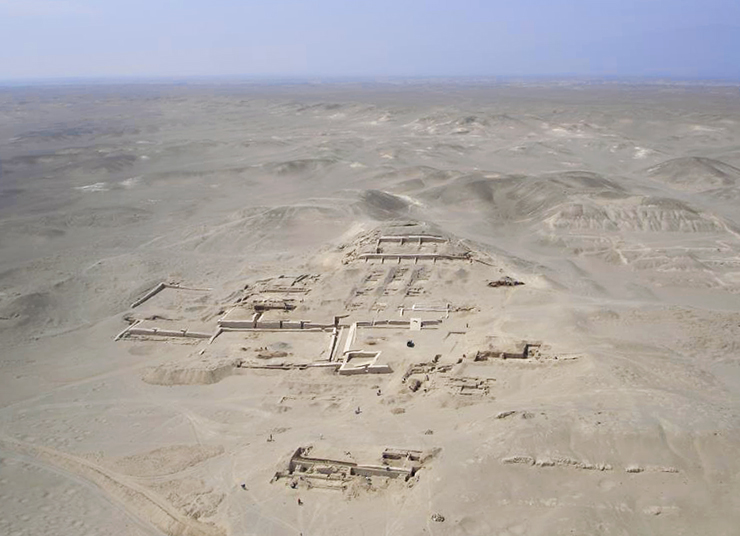
6. Cantalloc Aqueducts
Cantalloc is a network of subway aqueducts built by the Nazcas to capture water and transport it to the fields.
They are real subway galleries that can reach up to 40 feet deep!
In fact, some aqueducts are still functioning and are used to irrigate the surrounding land that produces cotton, corn, potatoes and fruit.
According to local belief, the water comes from a subway lake hidden in Cerro Blanco, the highest sand dune in South America. In gratitude, the locals bring offerings to it every year.
- Entrance fee: 10 soles, the price also includes entrance to the ruins of Paredones.
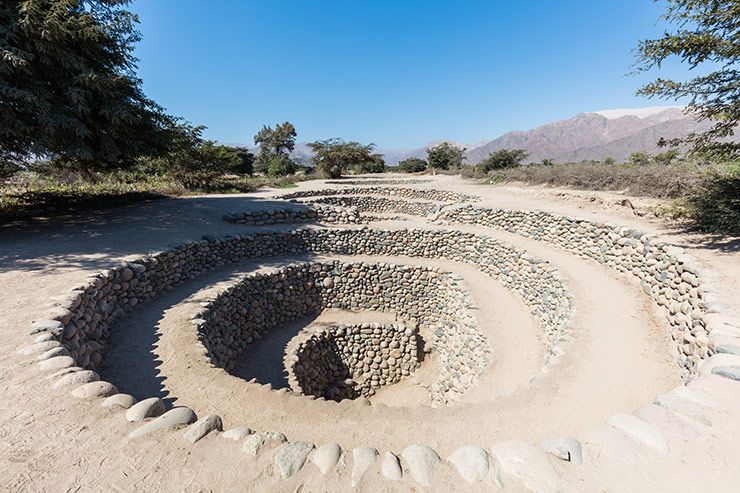
7. Los Paredones
1.2 miles south of Nazca you can find the ruins of Los Paredones, an ancient Inca checkpoint (1471-1493).
You will see a central plaza, administrative buildings, ceremonial space, warehouses, watchtower and other constructions.
- Entrance fee: 10 soles, also includes entrance to the Cantalloc aqueducts
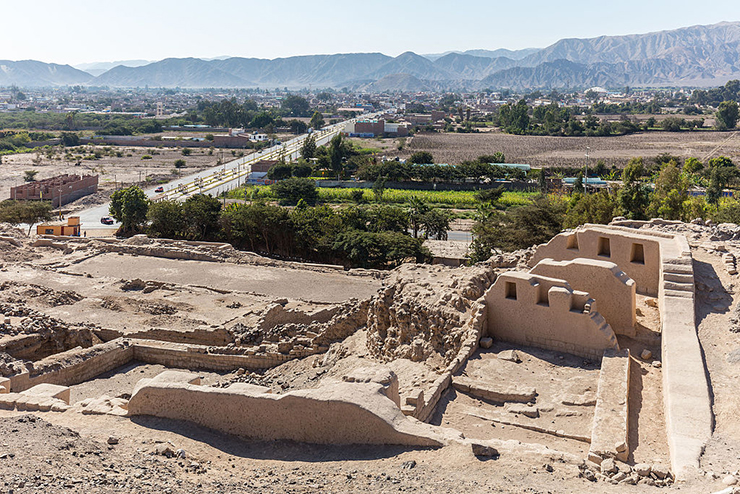
8. Maria Reiche Museum
Maria Reiche was a German archaeologist who dedicated much of her life to the study of the Nazca people – her name is all over the region!
When she died, her house became a small museum that you can visit to discover her world, with photos, sketches and notes. A place to visit in Nazca for history lovers!
- Admission: 5 soles. 9h-18h. To get there you can take a bus on the road (1 sol)
9. The Palpa Lines
While the Nazca Lines are the most famous, you’ll also find the lesser-known but equally fascinating Palpa Lines.
These geoglyphs—around 600 in total—are believed to have been created nearly 1,000 years before the Nazca Lines by the Paracas culture.
Many of the figures represent human forms, including a remarkable group known as the “Paracas royal family”, composed of eight figures spread across a hillside.
There’s also a small local museum that provides more context about the Palpa geoglyphs and their origins.
Unlike the Nazca Lines, which are etched on flat desert plains, the Palpa Lines are often drawn on hillsides and uneven terrain, offering a different visual and cultural perspective.
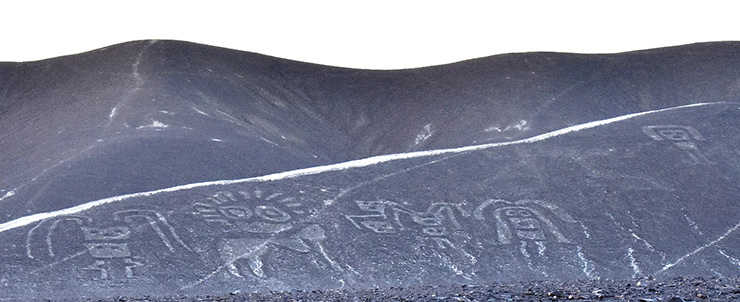
10. Telar de Buena Fe
The Telar de Buena Fe (also known as the Telar de Cantalloc) is a large geoglyph that can be observed from a nearby natural viewpoint.
It represents a loom along with various textile instruments—such as a needle and thread—which is why it’s sometimes referred to as the Textile Complex.
- Located about 2 miles from the center of Nazca, it’s easily accessible by taxi for just a few soles.
11. Maria Reiche Planetarium
It is a small planetarium that offers a night show about the Nazca Lines and the different theories surrounding them.
It shows the sky of the southern hemisphere and the beliefs of pre-Columbian cultures.
- Admission 20 soles. Address: Bolognesi 147, Nazca (inside the Nazca Lines Hotel).
- Presentation from 45 min to 19h and 21h in English, 20h15 in Spanish.
12. Dune buggy ride and sandboarding in the Nazca desert
Think buggy rides and sandboarding are only possible in Ica or Huacachina? Think again! The Nazca dunes, located in the spectacular Usaka Desert, offer an equally thrilling—but often much less crowded—alternative.
No snowboarding experience? No problem! Sandboarding here is suitable for everyone—you can go standing, sitting, or lying down, depending on your comfort and adrenaline level.
- Dune buggy tours in Nazca cost around 50 USD and usually last about 3 hours. Prices may vary depending on the size of the group.
- Many tours include a stop at the impressive archaeological site of Cahuachi, where you’ll have time to explore its fascinating remains.
It’s the perfect mix of adventure, scenic desert views, and ancient culture—an unforgettable experience in Nazca!
13. Sandboarding at Cerro Blanco
The coast of Peru is dotted with sand dunes, but Cerro Blanco (6,790 ft) is an exceptional one: it is the highest dune in South America and the second highest dune in the world!
Reaching the summit is demanding because you have to walk about 4-5 hours to get there, but the reward is unforgettable: an incredible panoramic view and a descent of more than half mile with lots of adrenaline!
- Prices start at 80$USD per person and vary according to the number of participants. They always practice on the smaller dunes before launching.
Where to sleep in Nazca?
Here are my recommendations for hotels in Nazca, which offer excellent value for money:
- La Petite Maison: A budget-friendly option with simple yet comfortable rooms and friendly service. From just $12 USD per night.
- Nasca Travel One: Spacious and clean rooms, with lovely hosts Anibal and Marita who even pick you up for free at the station. Rooftop terrace, Wi-Fi, and breakfast included. From $18 USD per night.
- Hotel Alegría de Nasca: Great spot to relax, just 20 meters from the main bus station. Cozy rooms with Andean decor, pool, and restaurant. Breakfast included. My favorite in Nazca, from $52 USD per night.
How long to visit Nazca?
The famous flight over the Nazca Lines only takes half a day, but there’s much more to see in the region.
I recommend arriving in Nazca the night before, so you can take the flight early the next morning when weather conditions are most favorable.
Keep in mind that many tourist attractions around Nazca are not easy to reach without a car. If you’re not driving, it’s best to join guided tours to avoid relying on limited public transport.
Here are my suggested 1- and 2-day itineraries in Nazca to help you make the most of your stay:
Nazca 1-Day Itinerary
If you only have one day in Nazca, here’s the best plan:
- Flight over the Nazca Lines in the morning (arrive at least 45 minutes before the flight). – Book it here!
- After the flight, visit the Chauchilla Cemetery (2.5 to 3 hours)
- If time allows, visit the Antonini Museum back in town
- Take an afternoon or evening bus to your next destination (many departures after 4:00 p.m.)
Nazca 2-Day Itinerary
Day 1
- Flight over the Nazca Lines in the morning – Book it here!
- Visit the Chauchilla Cemetery
- Explore the Antonini Museum back in Nazca
- In the evening, enjoy a session at the Nazca Planetarium
Day 2
- Visit the Cahuachi archaeological site in the morning
- In the afternoon, explore Los Paredones and the Cantalloc aqueducts
- Plan your departure between 4:00 and 4:30 p.m. to your next destination
What to take to Nazca?
Nazca is in the desert, so it is very hot and the sun is harsh.
Don’t forget to always bring with you a big bottle of water, sunscreen and a hat or cap.
Remember to bring cash, as credit cards are not always accepted, and your passport for the flight.
Where to eat in Nazca?
To eat on a budget in Nazca, it is best to take advantage of the daily menus (starter and main course with drink), for 5 to 10 soles.
If you are looking for a more comfortable place, Mamashana is a nice restaurant in Nazca with good grilled cuisine, Peruvian dishes, seafood and pastas. Around 30 soles per plate. Address: Bolognesi 270, Nazca. Open for lunch and dinner.
For a good grilled chicken I recommend Rico Pollo at Calle Lima, 190, Nazca.
How to get to Nazca?
- From Ica: the trip takes 3 hours with Cruz del Sur,Peru Bus and Oltursa. You can also take a colectivo (15 soles, 2h30-3h) here.
- From Lima: the trip takes about 7 hours with Cruz del Sur, Palomino and Oltursa.
Book Your Flight at the Best Price
Planning a trip to Peru? To get the best deal on your flights, I recommend using this flight comparison tool, in partnership with Skyscanner.
It’s the easiest way to find the lowest prices for both international flights and domestic flights within Peru—ensuring you pay the best rate with no hassle!
Rent a Car in Peru
Renting a car is one of the best ways to explore Peru at your own pace and make the most of your trip!
Personally, I always use Booking.com Cars for a few key reasons:
- Easily compare prices from all major rental agencies in one place—finding the best deal has never been easier!
- Free cancellation on most bookings, so you can reserve with peace of mind.
- Better insurance coverage at a lower price than rental companies—saving you money with no extra effort.
Click the button below to find the best car rental deals in Peru:
Rent a car
Book entrance tickets and guided visits
Take a travel insurance
Book a tour
Book your flight
Traveling to Peru? These articles will help you!
Discover all my articles about Peru: All my tips and itineraries to plan your trip in one place!
40 EPIC Things to Do in Peru (+ My Best Tips)
- All Best Things to Do in Paracas: Ballestas Islands & More
- 9 EPIC Things to Do in Huacachina (+ My Best Tips)
- 25 Epic Things to do in Lima (+ Tips)
- One Day in Lima: The Perfect Itinerary (First-Time Visit)
- 2 Days in Lima: The Best Itinerary + Where to Stay (First Time Visit)
- Itinerary: 5-6 days in Peru – Lima, Arequipa, Colca Canyon, Cusco, Sacred Valley and Machu Picchu
- Itinerary: 7-8 days in Peru – See the maximum in one week
- Itinerary: 10 days in Peru – The ideal itinerary for a short stay in Peru
- Itinerary: 2 weeks in Peru – The classic route
- Itinerary: 15 days in Peru – An itinerary that includes northern Peru
- Itinerary: 3 weeks in Peru
- Itinerary: 3 weeks in Peru + Bolivia – The best itinerary for visiting both countries
- Itinerary: 1 month in Peru – What to see and do in 30-31 days
You’re using Pinterest? Here is the picture to pin!
